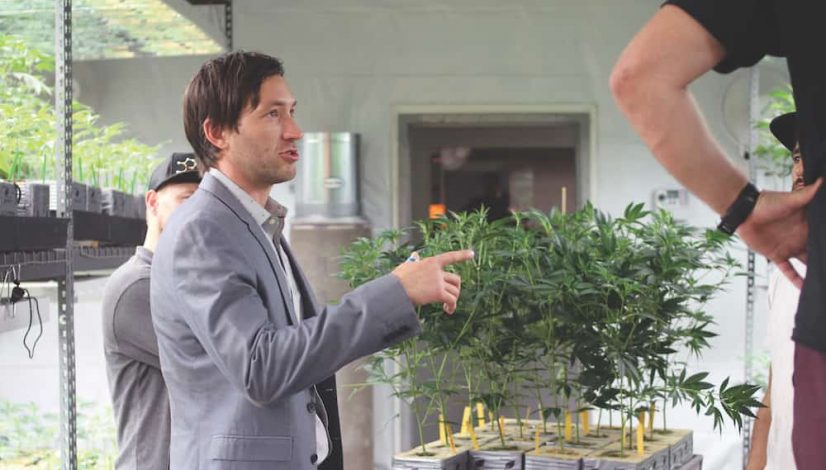Inside THC Design LA: Premium Estate-Grown Cannabis
How did an outlaw weed farmer from Oklahoma become a medical-marijuana grower in California and produce hundreds of pounds of premium estate-grown cannabis in a sustainable and environmentally conscious facility? Take an insider’s tour of THC Design’s massive indoor marijuana garden in the heart of Los Angeles and see just what it takes to grow large quantities of weed without sacrificing quality. It all starts with the desire and determination to create a new pot paradigm…
Grow West, Young Man
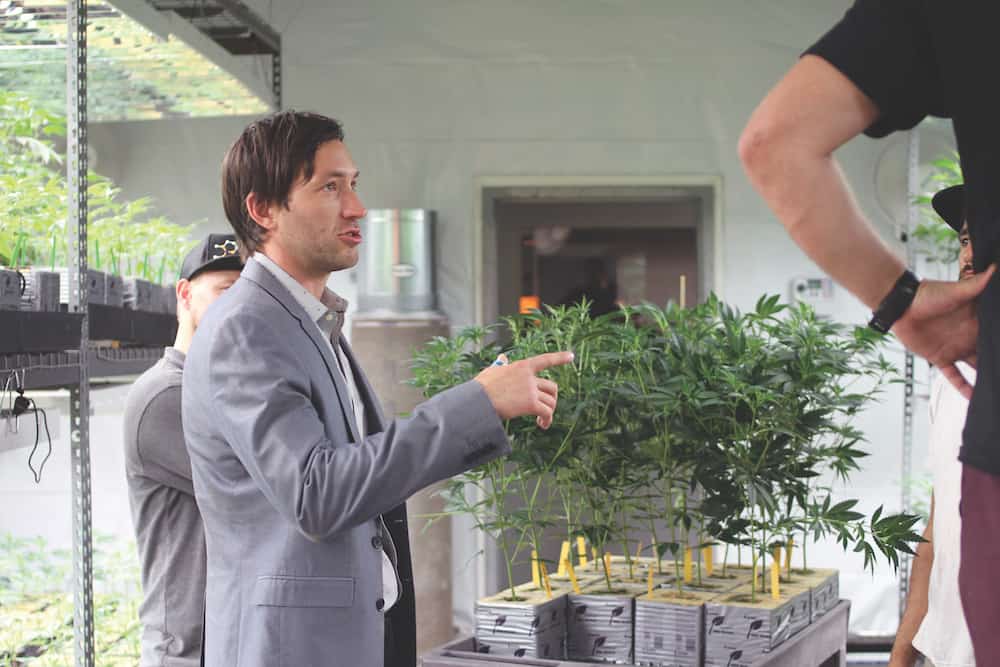
Courtesy of THC Design
Ryan Jennemann fled from Tulsa, OK, to Los Angeles with a dream to grow pot in relative freedom. He had seen how medical cannabis helped his ailing father with debilitating headaches and how the lack of it contributed to his dad’s demise at only 47 years old. The ongoing harassment, persecution and prosecution of his family by Oklahoma law enforcement led him to seek greener pastures out West. Now he’s a co-founder and the chief cultivator for THC Design, overseeing all of the company’s growing facilities and ensuring that the medicine it produces is as clean and as effective as possible.
From the moment I meet Jennemann and his crew, I realize there’s a palpable emphasis on family. Jennemann’s brother Seth is THC Design’s president and CFO, and much of the company’s staff are trusted friends from Oklahoma who migrated out to California to be a part of the team. Seemingly every worker I encounter on my tour looks happy to be there and shares with me a pride in being a part of the company and community.
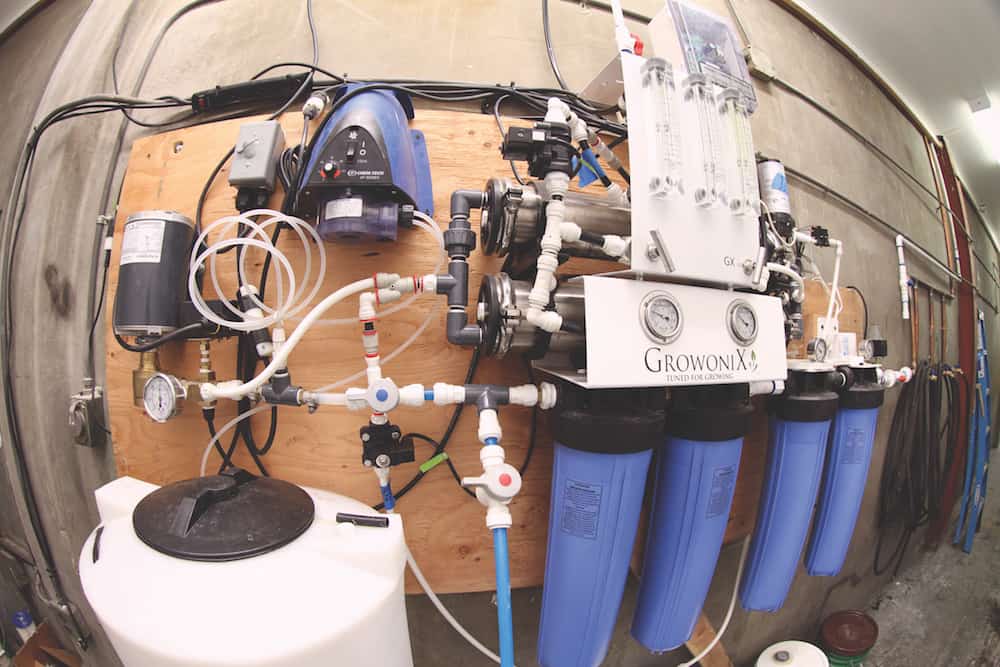
Courtesy of THC Design
The facilities at THC Design capture, reclaim and reuse between 1,500 and 2,000 gallons of water per day from dehumidifiers and central air conditioning. The growers follow strict Oregon Tilth organic standards, which are much more stringent than federal OMRI certifications. THC Design’s focus on renewable resources is driven by a constant desire to reduce its carbon footprint, and the company has increased its energy efficiency by 40 percent over the last four years.
THC Design also provides a unique veterans-outreach program, hosting a 12-week paid internship for retired military members to learn the various aspects of the cannabis-growing business. I asked Jennemann why the company has gone out of its way to hire vets.
“Well, first off, I think they’re good people and hard workers, and I have a tremendous amount of respect for their achievements,” he says. “I’ve hired people in the past and then watched them come in at least a half hour late every day, complaining about the traffic, acting entitled. Veterans are not that way at all. They are here on time and to work. Their training and experience make them dependable, trustworthy and able to meet obligations and accomplish demanding tasks. There’s always something to do here, and the vets we’ve brought in inherently understand that.”
It certainly helps the company’s public relations to reach out to ex-military people, but it also sounds like it helps the bottom line. “Veterans are an amazing untapped talent pool,” Jennemann says. “So in addition to giving back to those who have done so much for us, our internship program also makes great business sense.”
Jennemann certainly puts his money and his effort where his mouth is. Unlike some producers, THC Design advocates full legalization of cannabis and supports the National Cannabis Industries Association, Americans for Safe Access, the California Growers Association, the Drug Policy Alliance and many other superb law-reform organizations. Jennemann meets with legislators and plays an active role in community relations, and THC Design has programs in place for outreach to seniors, the LGBTQ community and those who live on skid row. The company hosted the first cannabis booth at DragCon and the first cannabis float at the Long Beach Pride Parade.
The Grow
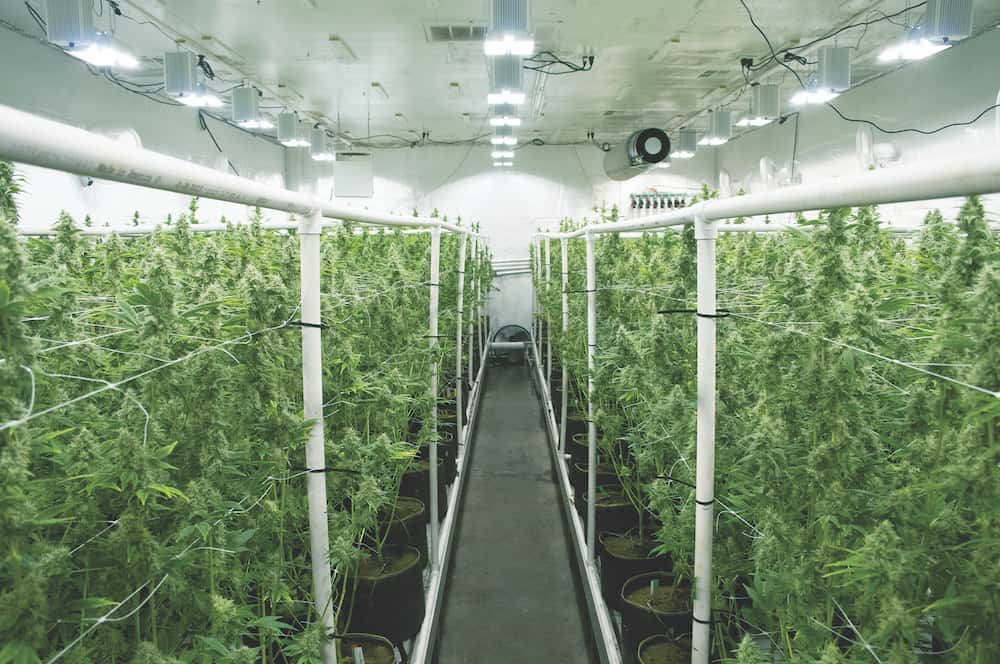
Courtesy of THC Design
The main THC Design facility I’m visiting boasts a total of 20,000 square feet. Nine flowering rooms, each 1,000 square feet, are timed so that each week a different room is ready to be harvested. Each room is lit by 27 1,000-watt Gavita lights with a footprint of 35 square feet per double-ended HPS (high-pressure sodium) bulb. Rolling trays hold the plants and can be moved easily so that workers can reach every area of the room. Moisture-monitoring sensors are installed in each zone to ensure proper humidity levels.
Mother plants grow in a soil mix and are fed aerated-compost tea. They’re lit by 315-watt LEC CMH (ceramic metal halide) bulbs (with plans to switch over to new, more efficient 600-watt versions) and pampered with tender loving care by a crew of devoted workers. The company’s even experimenting with utilizing aquaculture, with an 800-gallon tank growing carp. Black soldier fly larvae feed the fish while the waste from the carp feeds the moms. The plants get nitrogen from the fish and calcium and magnesium from the flies! Using fish guano instead of bat guano also protects bat caves from over-harvesting.
The nursery for clones is kept at 80-86°F with 80 percent relative humidity in order to replicate the natural spring planting season. Clones are cut from healthy mother plants, dipped in rooting hormone and then gently placed into rockwool cubes. Once rooted, they’re ready for the next stage: vegetative growth.
Rooted clones are transplanted into a mix of coco coir over perlite as they begin the vegetative stage. Containers are covered with FloraFlex caps and drip-fed with Mills Nutrients Basis A and B as the base. Tea brewers are employed to steep Bokashi compost teas as well.
Watering and Fertigation
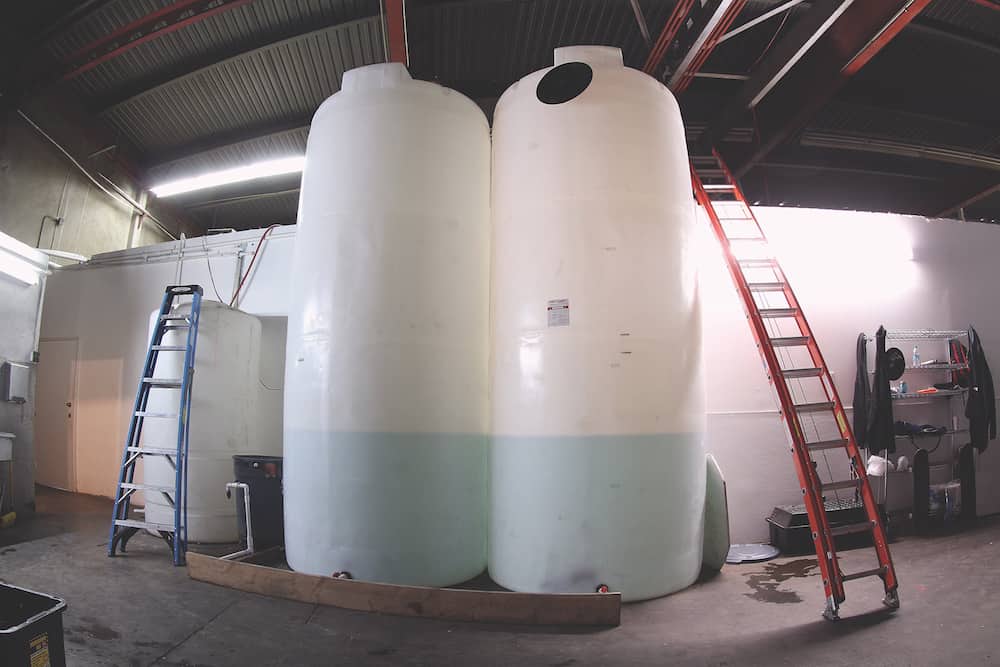
Courtesy of THC Design
Previously, THC Design discovered fungal growth in some of the reclaimed water from the HVAC systems and dehumidifiers. To eliminate it, the company uses inline UV lighting in the ducting and air handler in order to sterilize the liquids, a system similar to what’s employed in hospitals.
Today, more than two-thirds of the water used at THC Design is reclaimed—a significant reduction in the company’s water footprint.
This unique watering system rivals any I’ve ever witnessed. In addition to the UV lighting in the ducting and master reservoir, a mesh filter is used on the incoming condensate line from the HVAC to the reservoir to filter out any particulates.
Each vegetative and flower room has its own reservoir that’s mixed twice per week. The moisture-monitoring sensor in each zone triggers the water pump to irrigate just that zone when necessary. In the vegetative stage, watering is limited to two hours after the lights come on and no sooner than four hours before they go off. During flowering, watering starts four hours after lights come on and ends four hours before they’re turned off. All excess water is recaptured and filtered for reuse.
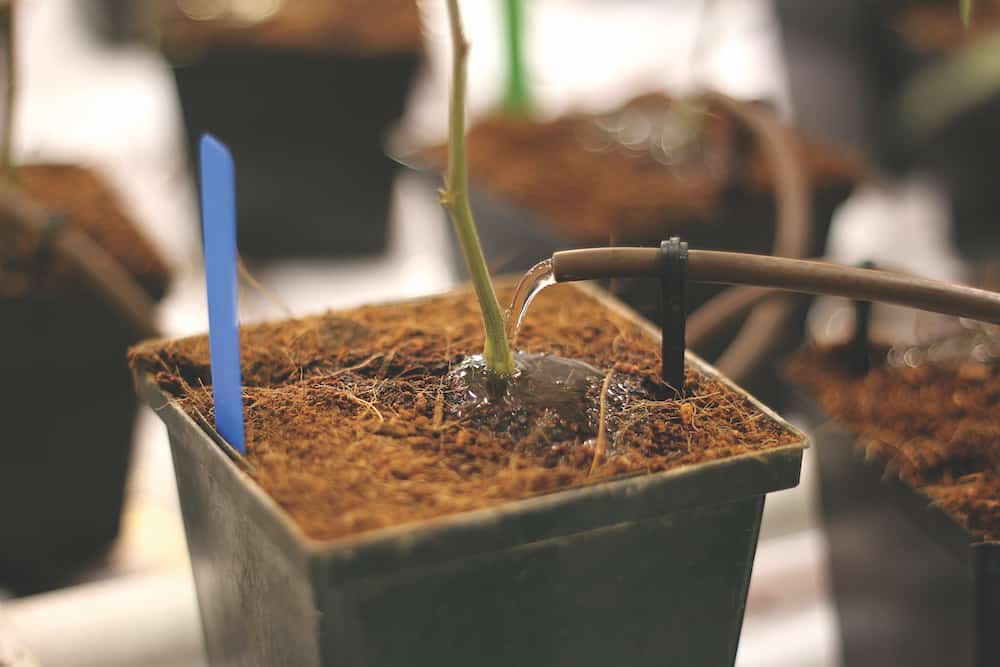
Courtesy of THC Design
This leaves just a four-hour window in the middle of the “day” for nutrient solution, and Jennemann has found this to be the best way to ensure the perfect moisture capacity in the medium for rapid root and plant growth. The wet/dry cycle encourages tremendously healthy plants that yield huge colas. The closer the plants get to flowering, the more the medium is allowed to dry out before watering again.
Jennemann tells me that dialing in this “plateau in the irrigation window” for each individual strain is the key to heavy harvests of buds saturated in essential oils. The balance between what he calls the “nurturing and torturing phases” produces glandular trichomes swollen with terpenes, cannabinoids and flavonoids.
Plants go through a 22-day vegetative stage before they’re induced to begin their 56-63 days of flowering. No synthetic plant-growth regulators (PGR) are used at any time. THC Design’s integrated pest management (IPM) consists of foliar applications of Regalia bio-fungicide, Venerate bio-insecticide, activated aerated tea, Big Time Exterminator and kelp hydrolysate. Additionally, garlic, lemon and fish oil, along with natural enzymes and bacteria, are used to combat pests before they get a foothold and before extreme measures even need to be considered.
The Harvest

Courtesy of THC Design
THC Design’s flowering rooms are timed to be harvested one room per week. After an aggressive weeklong flushing period using only plain water on the plants, they’re finally ready to crop. Every Wednesday, the THD Design harvesting team takes down an entire 1,000-square-foot room, managing to process an average of 2.7 pounds per light. That’s more than 70 pounds of dry flowers per week, and yet each premium estate-grown cannabis flower is trimmed entirely by hand.
“We take our time with the harvesting process,” Jennemann says. “It takes us 10-14 days to dry the whole plant with the fan leaves left on and all. A dry trim using workers with scissors is labor-intensive and costly but well worth it for the quality we achieve in the end.”
THC Design’s drying-room philosophy is simple. Cool air keeps the smell down and preserves volatile oils. The air conditioning is set at 70°F, a humidity fogger at 60 percent and a dehumidifier at 55-58 percent. It reminds me of that old Steven Wright joke: “For my birthday I got a humidifier and a dehumidifier… I put them in the same room and let them fight it out.” Either way, drying slowly in cool conditions kept at the optimum level of humidity results in a flawless flower that perfectly captures the potential of each cultivar grown at THC Design.
Post-harvest, each flowering room is cleaned thoroughly with hydrogen peroxide from top to bottom. Only then, with the area empty and devoid of plants, sulfur is burnt to discourage outbreaks of powdery mildew (PM). After the sulfur dissipates, the rooms are repopulated with vegged-out plants and the whole process begins again.
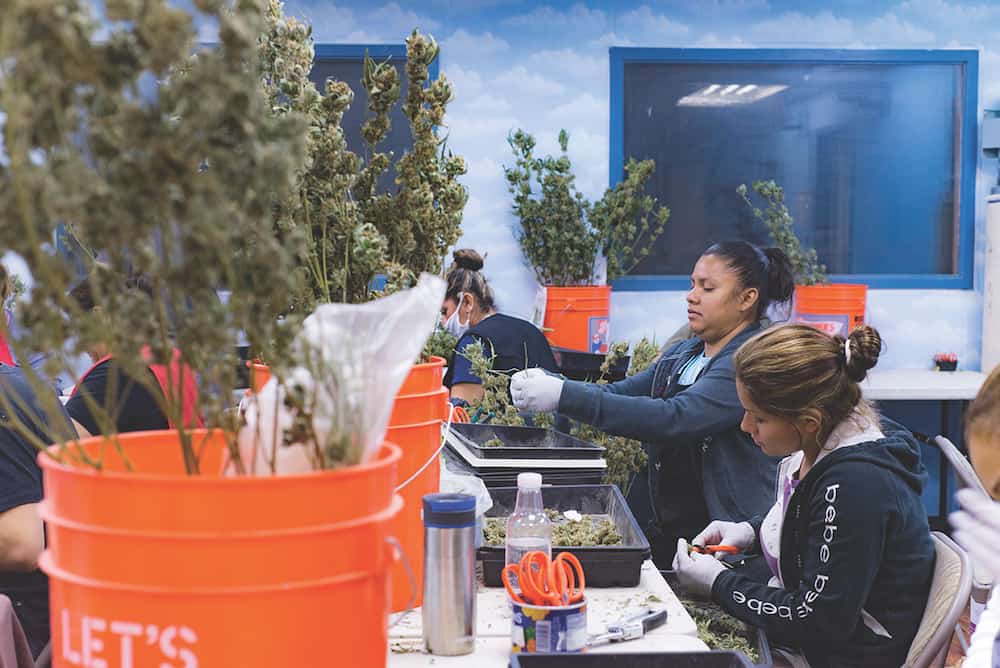
Courtesy of THC Design
All of this hard work pays off in the creation of a product that’s top-shelf, even though it’s produced in large quantities. The quality also extends to the packaging, with eighths and pre-rolls provided in classic tins and containers worthy of a high-end premium product, along with Boveda packs for humidity control and preservation. The pre-rolls come as six artisanal cones totaling 3.5 grams per box with independent test results included.
5 THC Design Strains
XJ-13
This is the company’s signature strain and the one it’s most known for throughout Southern California. A sativa-dominant cross of Jack Herer and G-13 Haze, XJ-13 relieves pain, anxiety and depression, and it’s a wonderful piney and lemony daytime smoke.
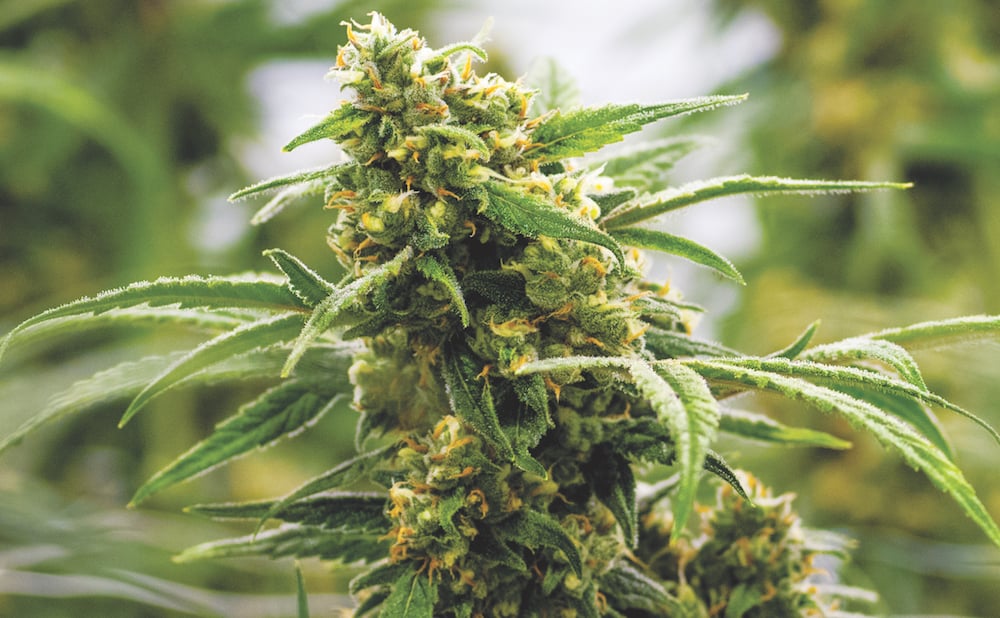
Courtesy of THC Design
Dosidos
This strain has been making a ton of noise and it’s no surprise as to why. Dosidos boasts a whopping high potency, testing between 28 and 30 percent in THC. It’s got a sweet, minty aroma with hints of lime and pine, and it comes on strong and seemingly lasts for hours.
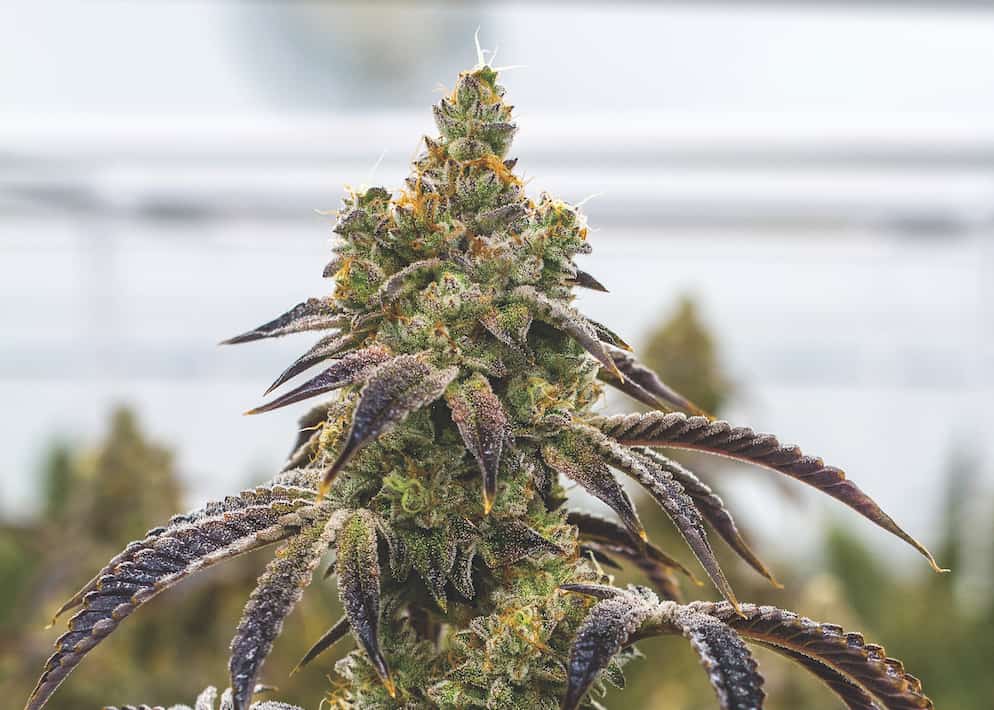
Courtesy of THC Design
Space Oddity
This one is a cross between Space Queen and Blue Dream for the perfect hybrid of desirable sativa and indica traits. Fruity, with just a hint of spice, Space Oddity heals the mind and body. Take a few hits, launch into the universe and try to contact ground control.
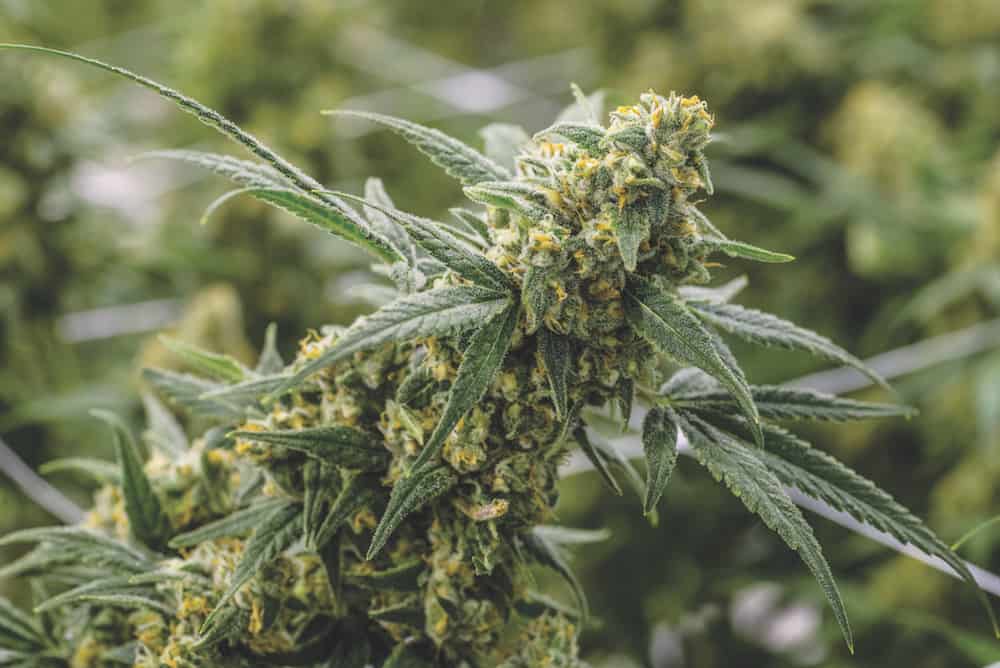
Courtesy of THC Design
Strawberry Banana
The THC Design pheno of this Crockett Family Farms classic produces some of the best hash oil I’ve ever tasted. The flowers aren’t too shabby either, with intoxicating and sweet fruity aromas and a euphoric buzz worthy of a trip to a museum or a walk through the park. Indica lovers appreciate the relaxing effects.
Kosher Kush
The house version of DNA Genetics’ outstanding OG-related strain packs quite a punch. Testing at over 29 percent THC and exhibiting that well-known raw, earthy fuel scent and flavor, Kosher Kush is classic “couchlock” weed. Medical patients appreciate this heavy indica’s numbing effects on body pains.
THC Design’s Premium Estate-Grown Cannabis
I leave THC Designs impressed with the fact that at least some cannabis growers are at the forefront of creating “greener” weed. With cultivation inevitably getting bigger and more corporate, it’s inspiring to see people at large facilities concerned about reducing their carbon footprint and engaging with their communities and legislatures. Besides that, it’s clear that the cannabis THC Design produces in large quantities is clean, flavorful and potent. Let’s hope more large-scale cultivators follow its lead in creating premium estate-grown cannabis.
The post Inside THC Design LA: Premium Estate-Grown Cannabis appeared first on High Times.

